Advertencia¶
Episodio I : Old quantum mechanics¶
utils.IFrame(src='https://phet.colorado.edu/sims/html/wave-interference/latest/wave-interference_en.html',
width='600px',
height='400px')
Radiación del Cuerpo Negro y cuantización de la energía¶
utils.Photo('Wien')

$${\displaystyle B_{\nu }(T)\approx {\frac {2h\nu ^{3}}{c^{2}}}e^{-{\frac {h\nu }{k_{\mathrm {B} }T}}}}$$
utils.Photo('Plank')

$${\displaystyle B_{\nu }(\nu ,T)={\frac {2h\nu ^{3}}{c^{2}}}{\frac {1}{e^{\frac {h\nu }{k_{\mathrm {B} }T}}-1}}}$$
$${\displaystyle B_{\nu }(T)={\frac {2\nu ^{2}k_{\mathrm {B} }T}{c^{2}}}}$$
utils.IFrame(src='https://phet.colorado.edu/sims/html/blackbody-spectrum/latest/blackbody-spectrum_en.html',
width='600px',
height='400px')

Efecto Fotoeléctrico¶
utils.Photo('Einstein')


utils.Photo('Rutherford')

utils.IFrame(src='https://phet.colorado.edu/sims/html/rutherford-scattering/latest/rutherford-scattering_en.html',
width='600px',
height='400px')
Espectro Atómico (Bohr, DeBroglie, Sommerfeld, Kramer)¶
utils.Photo('Bohr')

utils.Photo('de Broglie')

$$ E=n\hbar \omega \, $$ $$ \int p\,dx=\hbar \int k\,dx=2\pi \hbar n $$
utils.Photo('Sommerfeld')
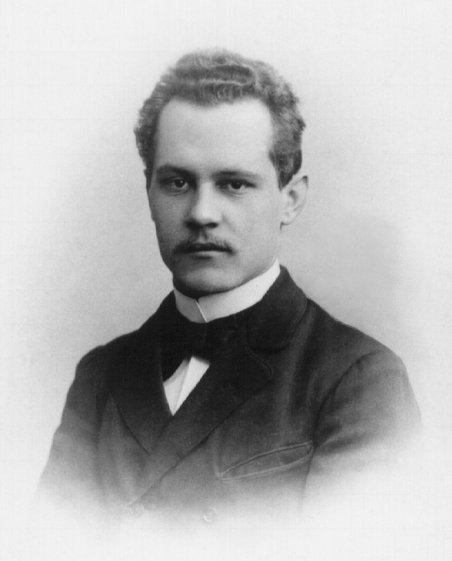
$$ \oint \limits _{H(p,q)=E}p_{i}\,dq_{i}=n_{i}h $$
utils.Photo('Kramers')
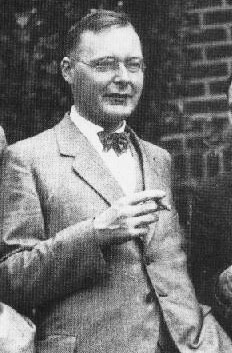
$$ X_{n}(t)=\sum _{k=-\infty }^{\infty }e^{ik\omega t}X_{n;k} $$
Momento angular de los electrones / Spin (Stern-Gerlach)¶
utils.Photo('Stern')

utils.Photo('Gerlach')
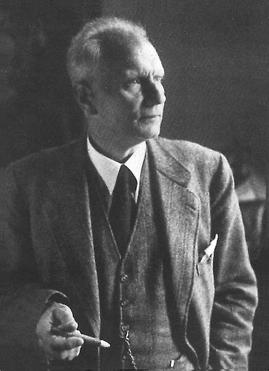
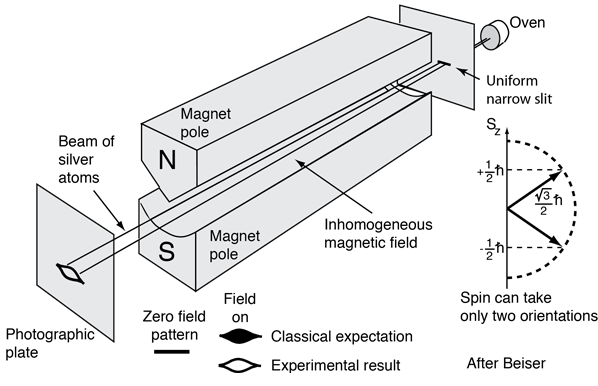
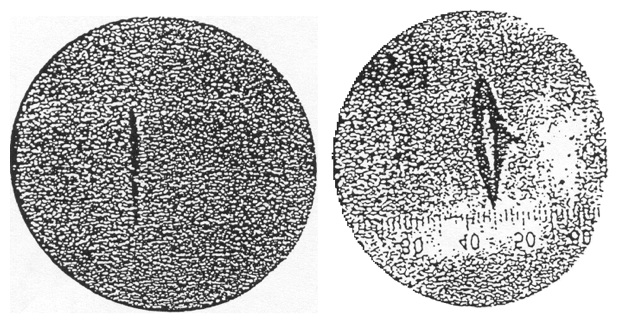
Simulación y comparación del modelo clásico y cuántico del momento mágnetico de un átomo¶
utils.Photo('Heisenberg')

Mecánica matricial de Heisenberg¶
$$X_{{nm}}(t)=e^{{2\pi i(E_{n}-E_{m})t/h}}X_{{nm}}(0)$$
$$ {\sqrt {2}}X(0)={\sqrt {{\frac {h}{2\pi }}}}\;{\begin{bmatrix}0&{\sqrt {1}}&0&0&0&\cdots \\{\sqrt {1}}&0&{\sqrt {2}}&0&0&\cdots \\0&{\sqrt {2}}&0&{\sqrt {3}}&0&\cdots \\0&0&{\sqrt {3}}&0&{\sqrt {4}}&\cdots \\\vdots &\vdots &\vdots &\vdots &\vdots &\ddots \\\end{bmatrix}} $$
utils.Photo('Born')

utils.Photo('Jordan')

$$ (XP)_{{mn}}=\sum _{{k=0}}^{\infty }X_{{mk}}P_{{kn}} $$
$$ \sum _{k}(X_{{nk}}P_{{km}}-P_{{nk}}X_{{km}})={ih \over 2\pi }~\delta _{{nm}} $$
$$ \frac{dA}{dt} = {i \over \hbar } [ H , A ] + \frac{\partial A}{\partial t} $$
utils.Photo('Schrodinger')

Mecánica ondulatoria de Schrodinger¶
$$i{\partial \over \partial t}\psi _{t}(x)=\left[-{1 \over 2m}{\partial ^{2} \over \partial x^{2}}+V(x)\right]\psi _{t}(x)$$
Formalización y notación de Bra-Ket¶
utils.Photo('Dirac')

utils.Photo('von Neumann')

$$ |\psi\rangle $$
$${\displaystyle \Psi (\mathbf {r} )\ {\stackrel {\text{def}}{=}}\ \langle \mathbf {r} |\Psi \rangle }$$
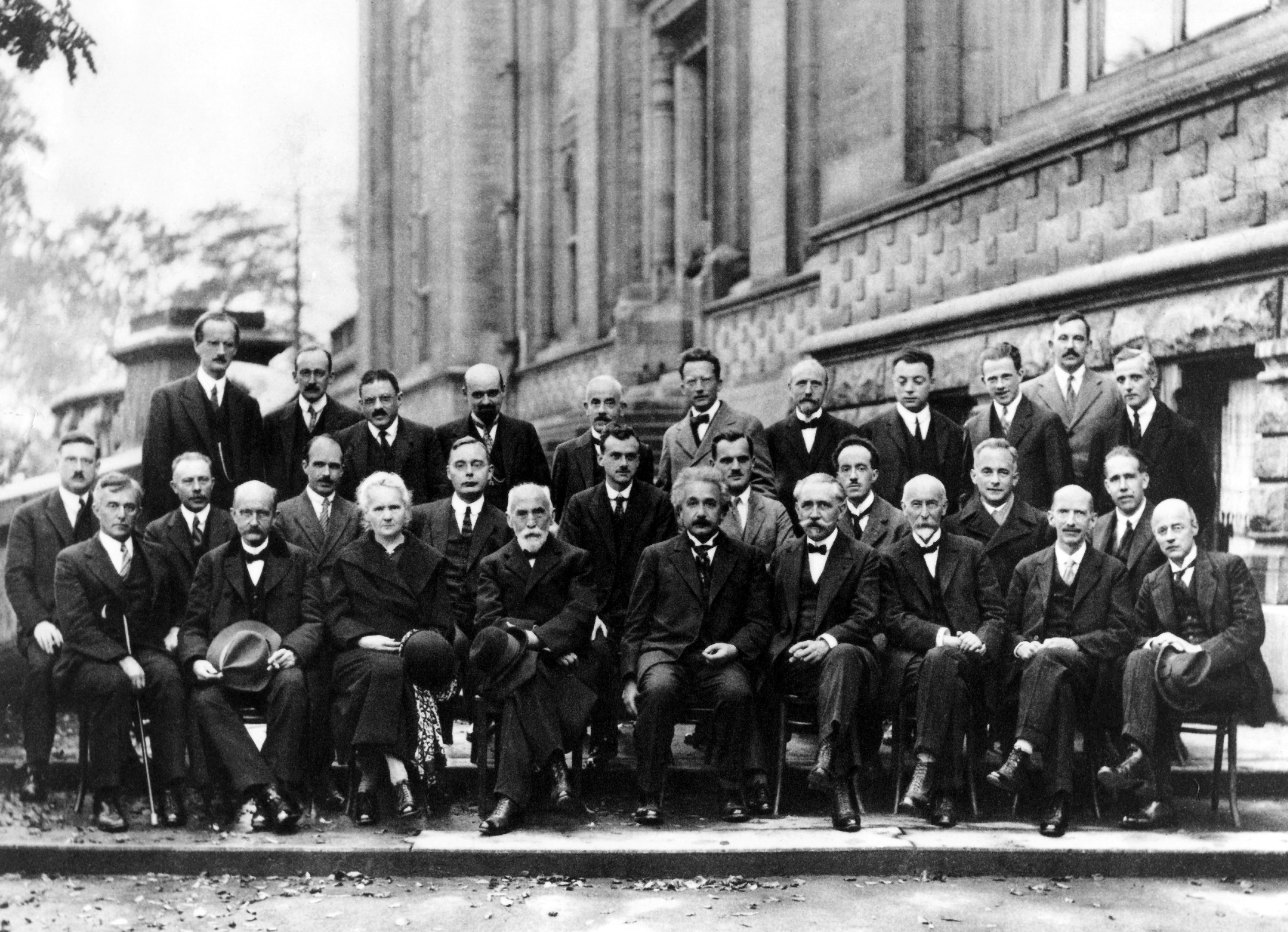
Parte II¶
Introducción a la matemática de la MC¶
A Hilbert space H is a real or complex inner product space that is also a complete metric space with respect to the distance function induced by the inner product
A little Aaronson time¶
QM = Prob + "-"¶
Probabilidad¶
Sea un conjunto de eventos posibles $\Omega$
$$f(x)\in [0,1]{\mbox{ para todo }}x\in \Omega$$ $$\sum _{x\in \Omega }f(x)=1 $$
from sympy import Matrix, init_printing
init_printing(use_latex=True)
Ma, Mb, Mc = Matrix([[1/2,1/2],[1/2,1/2]]), Matrix([[1/3,1/5],[2/3,4/5]]), Matrix([[99/100,0],[1/100,1]])
s = Matrix([[1],[0]])
Ma*s, Mb*s, Mc*s
Ma
Mb**200 * s
¿Qué obtendríamos si en vez de la Norma 1 imponemos la condición de normalización con la Norma 2?¶
$$f(x)\in \mathbb {C} {\mbox{ para todo }}x\in \Omega$$ $$\sum _{x\in \Omega }\overline {f(x)}* f(x) =1 $$
from sympy import sqrt, symbols, Symbol, init_printing
from sympy.physics.quantum import Bra, Ket, Dagger, Operator
Postulados de la MC¶
Postulado 1¶
El estado de todo sistema físico está representado por un vector (de norma unidad) en un espacio de Hilbert $\mathcal{H}$
a, b = symbols('alpha beta',complex=True)
psi, phi = Ket('psi'),Ket('phi')
estado = a * psi + b * phi
estado
Dagger(estado)
( Dagger(estado) * estado ).doit()
Postulado 2¶
Todas las propiedades observables de un sistema físico se prepresentan por un operador lineal hermítico que actúa sobre $\mathcal{H}$
Postulado 3¶
Los resultados posibles de la medición de cualquier observable $A$ son sus autovalores $a_n$
Postulado 4 ( Regla de Born )¶
Si el estado de un sistema es $\left|\Psi\right\rangle$, la probabilidad de obtener el resultado $a_n$ en la medición del observable $A$ es siempre
$$ Prob\left(a_n | \left|\Psi\right\rangle \right) = \left\langle \Psi\right| P_n \left|\Psi\right\rangle $$
donde $P_n$ es el proyector asociado al autovalor $a_n$. Si $A$ es no degenerado entonce $P_n = {\left|\phi_{n}\right\rangle }{\left\langle \phi_{n}\right|}$ y la probabilidad resulta ser $$Prob\left( a_n | \left|\Psi\right\rangle \right) = \left| \left\langle \phi_{n} |\Psi\right\rangle \right|^2$$
Postulado 5 ( Postulado de proyección o colapso )¶
Si el estado de un sistema es ${\left|\Psi\right\rangle }$ y medimos el observable $A$ y detectamos el autovalor $a_n$, entonces el estado del sistema después de la medición es la proyección de ${\left|\Psi\right\rangle }$ sobre el subespacio asociado al autovalor $a_n$
from sympy.physics.quantum import TensorProduct
j,k,l = Ket('j'), Ket('k'), Ket('l')
A, B = Operator('A'), Operator('B')
jk = TensorProduct(j,k)
jk
Partículas idénticas¶
Paradoja de EPR¶
$$|\Phi ^{+}\rangle ={\frac {1}{{\sqrt {2}}}}(|0\rangle _{A}\otimes |0\rangle _{B}+|1\rangle _{A}\otimes |1\rangle _{B})$$
from sympy.physics.quantum.qubit import Qubit
( Qubit('00') + Qubit('11') )/sqrt(2)
Desigualdad de Bell¶
Ejemplo de Teleportación
